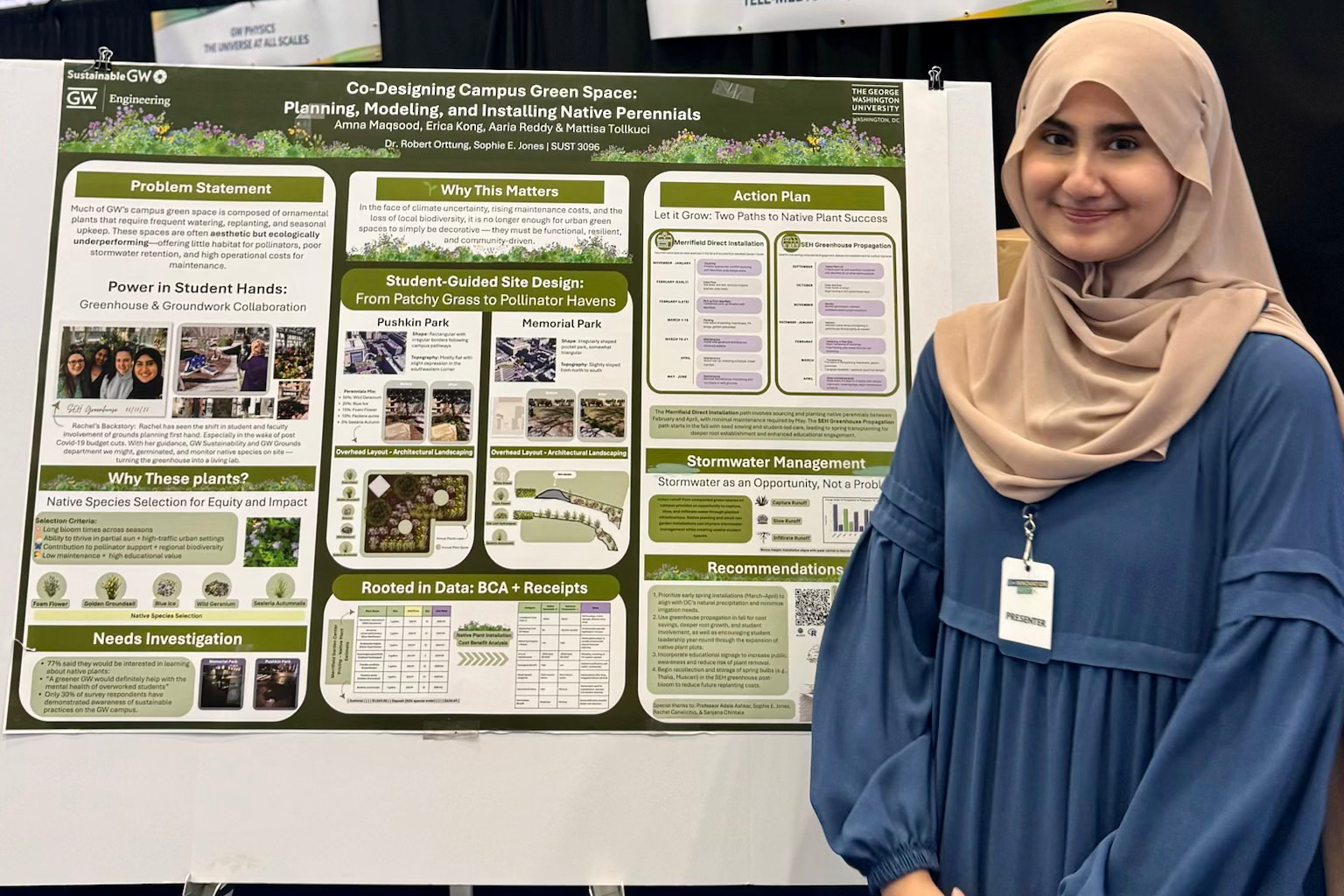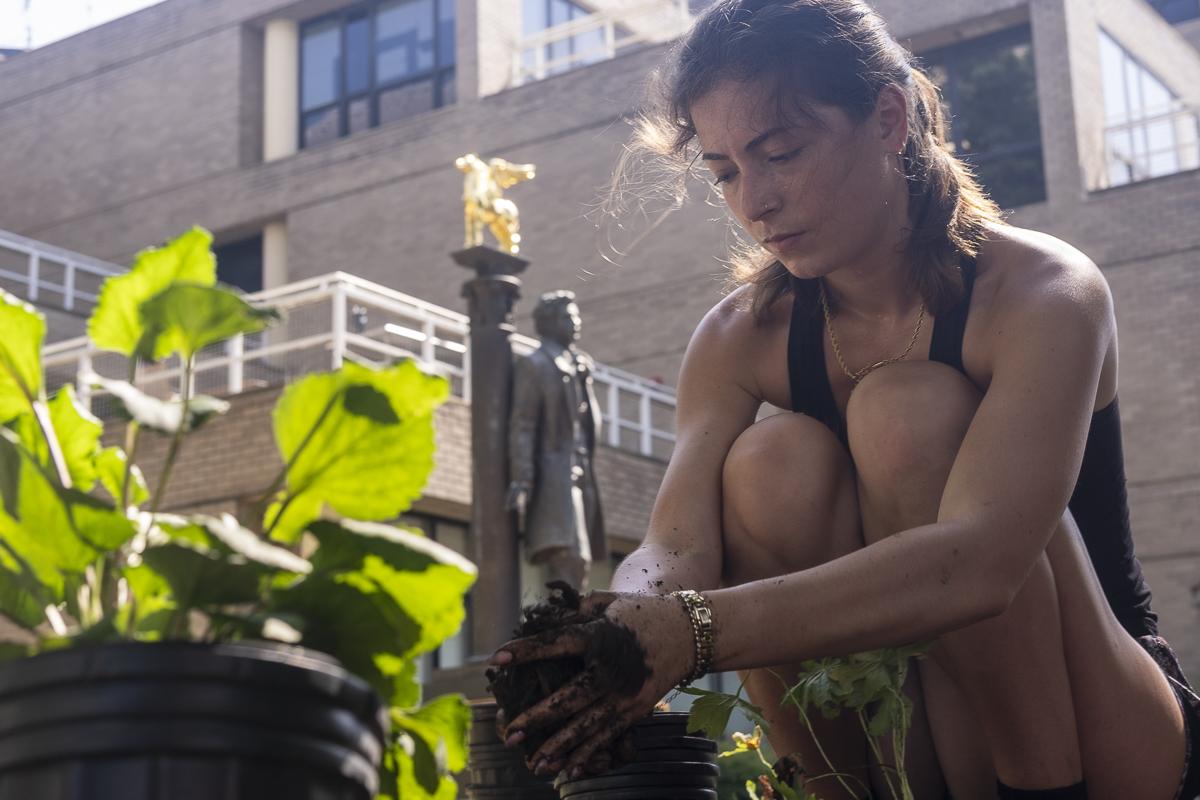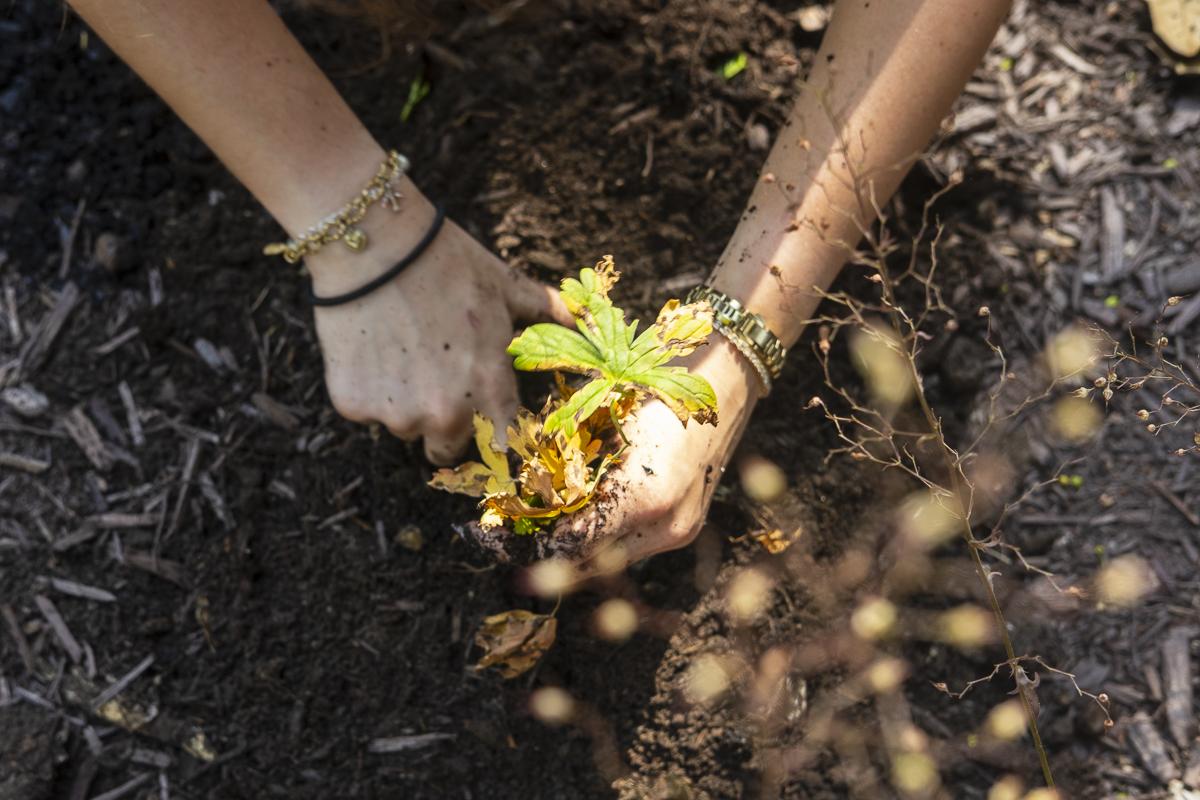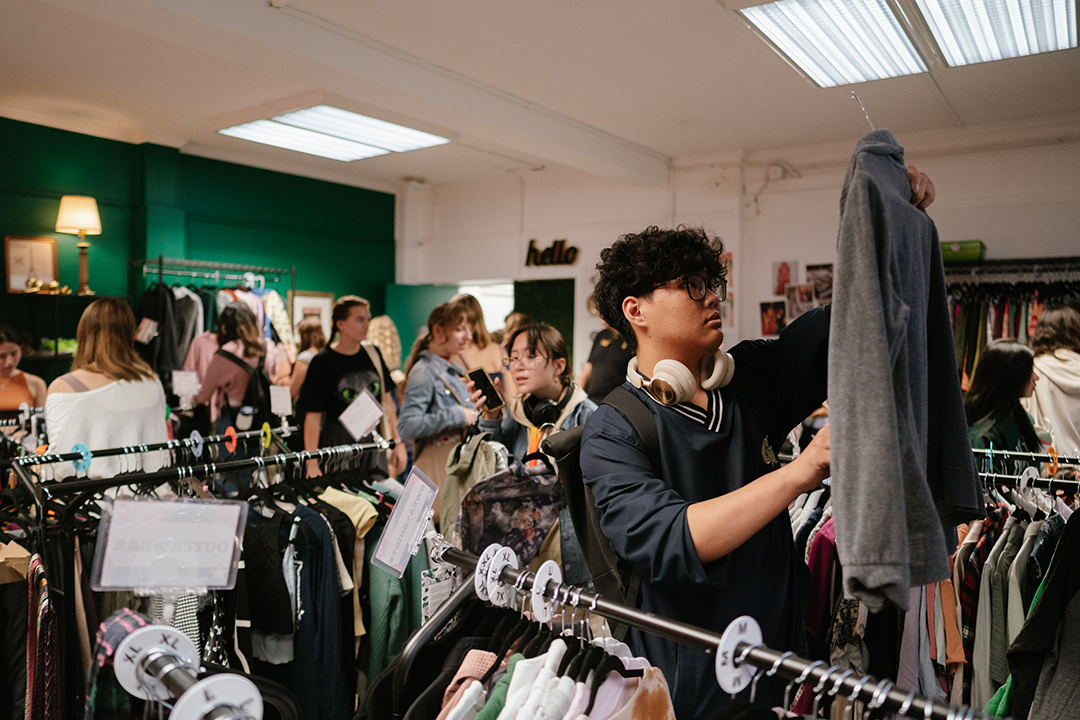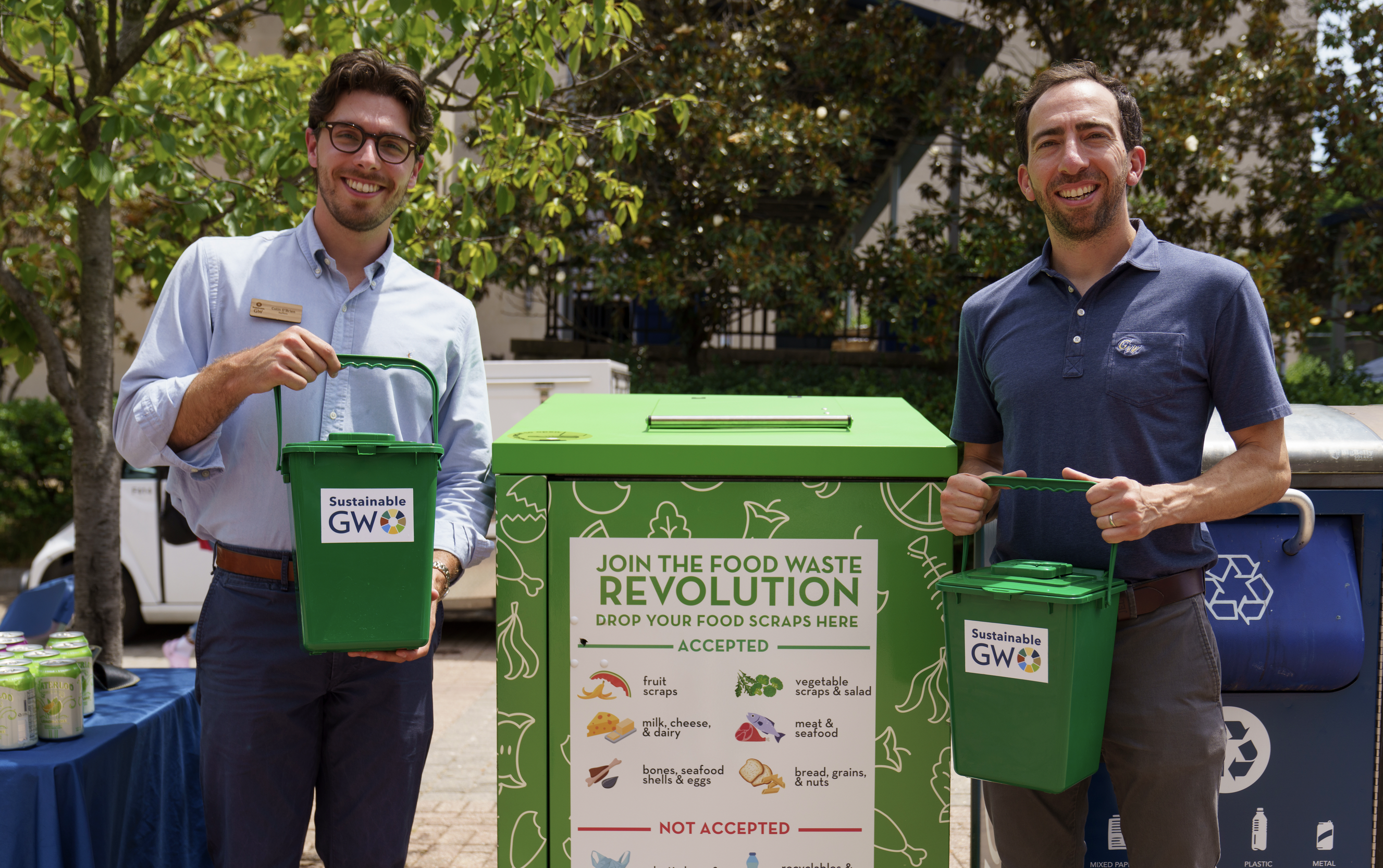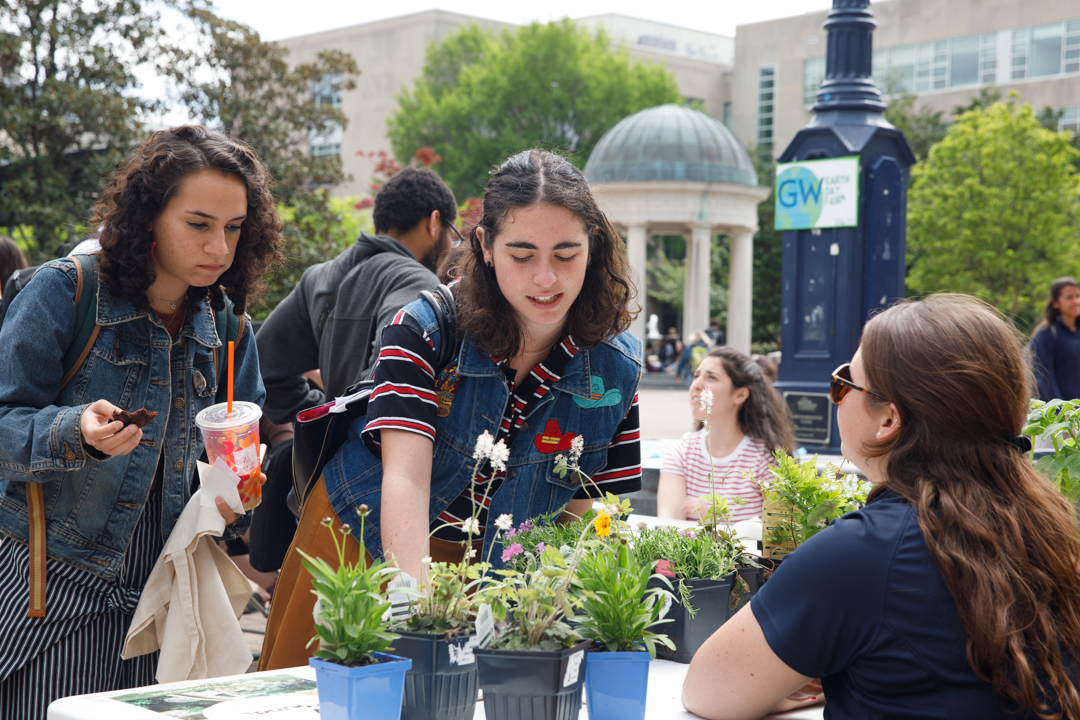On a scorcher of an early summer morning, beneath birds’ insistent chirps, members of a George Washington University grounds crew worked over the mulched mound in Pushkin Park putting in dozens of plants—the perennial foam flowers, golden groundsel, wild geranium, blue mistflower, black-eyed Susan and oakleaf hydrangea—species all native to the area around the District of Columbia that could save the university thousands of dollars.
When rainfall flows off roofs onto walkways and roads in urban areas, there is not much ground soil to soak it up, creating runoff that contributes to pollution and turning into puddles and potential flooding. On rainy days in Foggy Bottom, Amna Maqsood, a rising senior and systems engineering major, often found herself avoiding puddles in the streets to get to the School of Engineering and Applied Science, a not entirely uncommon occurrence in urban spaces such as GW’s Foggy Bottom campus.
“Especially the area around Pushkin Park, there is a giant puddle whenever it rains. It really can be a problem,” she said.
As an engineering student and sustainability minor with a special interest in the water and energy sector of urban planning, it seemed like a problem in search of a solution for her sustainability capstone project.
“We learned that urban runoff is a super common issue all throughout campus. Also [Veterans] Memorial Park, they have a runoff issue as well. There are drainage systems. They just aren’t working well,” she said.
As part of Maqsood’s research, she attended storm water policy forums held by the Water Environmental Federation and consulted with Rachel Canalichio, the GW Wilbur Harlan Greenhouse manager, learning about the value of greenspaces in the urban landscape, including green roofs and native perennials. She was also mentored by Adele Ashar, a retired professor in the College of Professional Studies.
“Native perennials are the most sustainable solution. Their deep roots absorb rainwater, prevent erosion and, most importantly, reduce run-off,” Maqsood said.
She also kept in mind the university’s aim to make greenspaces appealing, so she did bloom analysis and “selected plants that have super long blooming times across seasons because we wanted to make sure they could thrive in partial sun in a high traffic urban setting.”
“We looked at low maintenance [plants] that don’t require too much water. That’s how we came up with plants we selected.” Even more importantly, she said, a cost benefit analysis showed that over a span of 10 years the seasonal blooming plants could save the university as much as $10,000 in replanting costs.
Sophie Jones is a project associate in the GW Office of Sustainability who serves as a liaison to students in the sustainability capstone, which engages students in projects to make the campus more sustainable. Maqsood and her team, Erica Kong, who graduates in fall 2025, Aaria Reddy, B.A. ’25, and Mattisa Tollkuci, B.A. ’25, met with Jones throughout the spring semester to adjust expectations and address logistical questions.
“They had no idea the university would fund this. I told them it can be part of the existing budget,” said Jones, who also showed the students how to map the landscaping and the format and pictures to use.
At the beginning of each semester, Robert Orttung, professor of sustainability and international affairs, and director of the Sustainability Research Institute at the GW Alliance for a Sustainable Future, invites a representative from the Office of Sustainability to the class to share priorities that include ways to reduce the use of electricity and water, get more pollinators on campus and improve green space. In the past, there have been student projects on composting, recycling and food waste on campus.
“It is a very collaborative effort between the operations side of the campus and the teaching research side,” he said. “We kind of use the campus as a living laboratory and show by example how we’re making the world a more sustainable place.”
Maqsood is a good example of somebody who just went all in, Orttung said.
“She was probably the most motivated, most dedicated in making this happen. It is really a testament to her dedication and energy that she got the GW grounds team to put in the planting that they would not have otherwise,” Orttung said. “I think she is amazing, so committed to the project. It's her initiative, along with the contributions of Erica, Aaria and Mattisa, that it got done.”
He hopes the plants will “create an atmosphere that will bring the natural ecosystem back into a more stable state, a more natural environment to which butterflies, migrating birds and insects will return and bring the campus back to a more natural state even though it is still in the middle of the city.”
Great company for Alexander Pushkin, the giant of Russian literature, a statue of whom looms over that corner. It was donated by the Russian Embassy and is the only one in the United States.


